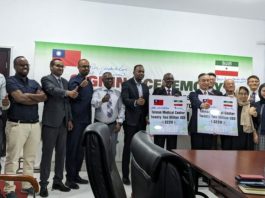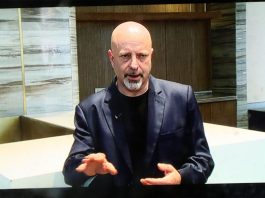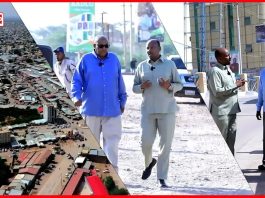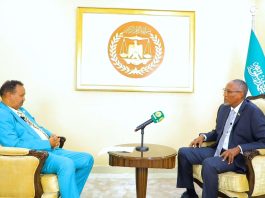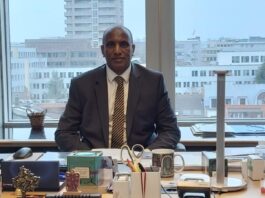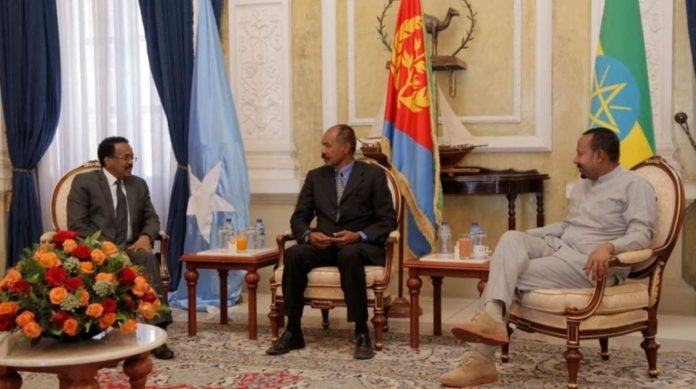
What’s Behind Ethiopia’s Overtures Toward Recognition of Somaliland? At a time when Israel’s shipping through the Red Sea has been blocked by Ansarallah in Yemen, control over the coast of Somaliland to its south across the Gulf of Aden, has become strategically crucial for Western powers, Elias Amare, former editor of HOA TV, told the Peoples Dispatch in an interview
By Pavan Kulkarni
At a time when conflict over the Red Sea and Gulf of Aden is intensifying in the Arabian peninsula to its north, another potential conflict is brewing on the southern side of these troubled waters in the Horn of Africa.
Fears of a war between Ethiopia and Somalia have been stoked by the recent Memorandum of Understanding (MoU) signed between Ethiopia and Somaliland, a Western-backed separatist breakaway from northern Somalia whose claim to sovereignty has no international recognition.
As a part of this MoU, Ethiopia has committed to consider recognizing Somaliland as a sovereign country, in exchange for a 50-year lease of a part of its coastal land and seawater for the naval ambitions of this landlocked country.
Somalia, whose sovereignty over its northwestern region called Somaliland by the secessionists who control it is recognized in international law, has warned Ethiopia from proceeding with the MoU which it has declared illegal. Nevertheless, Ethiopia and Somaliland have declared their intention to proceed with the MoU, and are even exploring military cooperation.
Have the US and the UK, which have been backing Somaliland and are now bombing Yemen to its north across the Gulf of Aden, played a role behind the scenes of this MoU? Could this lead to a war between Ethiopia and Somalia, further destabilizing the Horn of Africa? What is Eritrea’s position in this conflict? How did Ethiopian Prime Minister Abiy Ahmed, who was seen as a figure uniting the Horn of Africa and transcending ethnic fault lines within Ethiopia, become a divisive figure in the region and within his country where ethnic tensions have peaked again?
In an interview with Peoples Dispatch, Elias Amare, former editor of the Horn of Africa TV and an expert on this region at the intersection of Africa and Asia, answers these and other important questions surrounding the controversial MoU.

Read an edited and abridged version of the interview below.
Peoples Dispatch: As things stand now, Ethiopia insists that it will go through with the MoU despite Somalia passing a law declaring it illegal. Somalia’s President Hassan Sheikh Mohamud has called on Somalis to “prepare for the defense of our homeland”. Prime Minister Hamza Abdi Barre has said that Ethiopia will “withdraw carrying their dead” if they intervene in its sovereign territory. But neither these warnings nor the international condemnation appears to have dissuaded Ethiopia and Somaliland yet. Instead, the chiefs of staff of their respective armies have met to explore military cooperation. How far do you see this escalating? How dangerous could this get?
Elias Amare: There is indeed a danger of war being ignited through the reckless adventurism and miscalculation on the part of Ethiopia’s Prime Minister Abiy Ahmed Ali and his Prosperity Party. But the concrete situation on the ground is such that Ethiopia cannot afford an external war. It is already caught up in a quagmire of civil war in the Amhara region. When the fighting started in Amhara last April, the army generals said they would crush the rebellion in weeks. Nine months later, the war is intensifying and the Ethiopian National Defense Force (ENDF) is losing ground. It is unable to win against rag-tag militias even within its own borders. Ethiopia is also bankrupt right now. There is hunger and famine in the country. 20 million are in urgent need of humanitarian assistance. There is stagflation. The country cannot pay for the debt service of the Eurobond it has borrowed over the last year. It is on the verge of a state collapse.
On the other hand, Somaliland’s President Muse Bihi is increasingly isolated. Large sections of the population in northern Somalia, called Somaliland by the secessionists who control it, have rebelled and declared that they are not for secession. Following a bitter civil war last year, the Somaliland army was defeated in a humiliating way by the unionists in the SSC-Khaatumo region, which is now reintegrating with Somalia. In the area of the Lughaya in Awdal where the coastal access is supposed to be leased to Ethiopia, there has been a massive popular uprising. People there have taken arms saying not an inch of Somali land will be ceded to Ethiopia.
So this meeting between the army chiefs to explore military cooperation between Ethiopia and Somaliland is just propaganda which means little on the ground. Somaliland’s defense minister has resigned in protest against the MoU. The details of the MoU itself have not been released, which is not normal at all. One expects that the parliaments of the two countries would be informed of the contents of the MoU. But it has been kept a secret. Muse Bihi is claiming that as a part of the MoU, Ethiopia will become the first country to recognize Somaliland’s claim to sovereignty. But Ethiopia is backtracking with statements saying it has only committed to “make an in-depth assessment toward taking a position regarding the efforts of Somaliland to gain recognition.”
So this MoU seems like a diversionary tactic by two desperados, Muse Bihi and Abiy Ahmed, who are losing their own domestic legitimacy.
That being said, the dangers cannot be understated. Dealing with a secessionist breakaway as if it were a sovereign state wrecks the charters of the UN and the African Union (AU). It opens a Pandora’s box in Africa, where there are many other secessionist groups. This MoU can set a precedent for other countries to start dealing with such groups, violating the sovereignty and territorial unity of several countries. That can plunge the entire continent into endless civil wars and conflicts.
PD: Speaking in the UK’s parliament, Alexander Stafford, an MP of the ruling party in Britain, called on Prime Minister Rishi Sunak to take advantage of the opportunity that has been opened up by this MoU to recognize Somaliland’s claim to sovereignty. Sunak did not reply in the negative but gave an ambiguous open-ended response. Several Somali activists agitating for the reunification of Somalia argue that it is the UK that is keeping the Somaliland project afloat and that this separatist breakaway would not have survived this long without Western backing. Do you see old imperialist hands at play behind the scenes of this MoU?
EA: The Prime Minister of the UK deftly dodged that question. He neither rejected Stafford’s suggestion nor said yes, and left the question open. The UK has interests in Somaliland. Particular oil explorations have been made. There have been some promising findings. Somaliland also has a colonial legacy. It was at one time a British colony. Behind the scenes, the British are dangling before Somaliland the prospect of recognition if another African country first recognized it.
Also, earlier in 2022, the commander of US AFRICOM General Stephen J. Townsend visited Somaliland. He was the highest-ranking military official to visit the self-declared republic. He toured Berbera port and discussed matters including security cooperation with Muse Bihi. Other officials, including the former US Assistant Secretary of State for Africa, Tibor Nagy, have also been making visits and forcefully advocating the recognition of Somaliland lately.
When Muse Bihi went to the US ahead of Townsend’s visit to Somaliland, he held meetings with officials of AFRICOM, the Department of Defense, and members of Congress to discuss security cooperation. He was also hosted by the right-wing think-tank, Heritage Foundation. So connecting all these dots indicates that there have been imperialist machinations behind the scenes to encourage secession, even while officially maintaining a “One Somalia” policy.
PD: To the north of Somaliland across the Gulf of Aden is, of course Yemen, whose ruling Ansarallah has been targeting ships to and from Israel in solidarity with Palestine. Incidentally, before calling on Sunak to recognize Somaliland, Stafford first commended Sunak for bombing Yemen, supposedly to secure Red Sea shipping. Is it a mere coincidence that this Somaliland-Ethiopia MoU has come at this time when the war to control access to the Red Sea is widening? Or do you read more in the timing?
EA: That’s another connection we must make. The war against Gaza is not going well. Palestinian resistance has fought back fiercely. People all over the world have condemned Israel for the genocidal war. Add to this, Yemen’s Ansarallah has checkmated Israel’s shipping passage between the Red Sea and the Gulf of Aden through Bab-el-Mandeb. With that conflagration widening, control over the coast of so-called Somaliland, which is to the south of Yemen, has become all the more urgent and strategically crucial for the Western powers. Given this background, Stafford’s opening his comment in the UK parliament with the bombing of Yemen and then raking up the question of Somaliland does indicate there is a link between the two issues.
PD: Ethiopia’s quest for Red Sea access is of course much older than this current conflict involving Yemen. There was an unease felt in the Horn of Africa after Abiy Ahmed said last October, “We can see that only a narrow strip of land separates us from the sea. It is crucial for the present leaders of Somalia, Djibouti, Eritrea and Ethiopia to engage in discussions, not just for the present, but to ensure lasting peace” and “to prevent future generations from resorting to conflict.” Many read an implicit threat of war in his statement. Djibouti responded by saying its sovereignty cannot be questioned either in the present or in the future. Eritrea was more reserved in its response, calling on all concerned parties “not to be provoked by these events.” But it did say that “the affair has perplexed all concerned observers.” Did these remarks by Abiy cause considerable tension and mistrust in the region? And can you place these remarks in the historical context of Ethiopia’s quest for Red Sea access?
EA: Red Sea access has never been an issue as far as Eritrea is concerned. Since Eritrea’s independence – de-facto in 1991 and de-jure in 1993 – Ethiopia had been using Eritrea’s ports of Assab and Massawa on extremely favorable terms. Ethiopia’s former PM Meles Zenawi had himself acknowledged it. Access was duty-free. Other fees were paid in Ethiopian local currency. Eritrea never insisted on payment in USD. But Ethiopia, which was then under the rule of the Tigray People’s Liberation Front (TPLF), started a war against Eritrea in 1998 and boycotted the use of its ports. Since then, it has been relying entirely on Djibouti, where they are paying to the tune of one billion USD per year. Even during the war, Eritrea’s position was that port access was never an issue. Eritrean President Isaias Afwerki has said that on record many times.
After the TPLF was overthrown by popular protests and Abiy Ahmed came to power, Eritrean ports were once again open for Ethiopia when Abiy went to Asmara to sign the peace deal in 2018. But Abiy was not serious about it. He was insinuating some sort of a long-term lease. He wanted a small corridor in violation of Eritrea’s sovereignty. Of course, Eritrea could not concede that. But it has always been willing to grant access on favorable terms, much more favorable terms than what Ethiopia has in Djibouti. So all this talk about Red Sea access being denied to Ethiopia is just propaganda to cater to extreme right-wing expansionist elements in Ethiopia who still have trouble acknowledging Eritrean independence and sovereignty.
PD: On the same day that the army chiefs of Ethiopia and Somaliland met in Addis Ababa, Somalia’s President Hassan Mahamud was in Asmara to meet Eritrean President Afwerki who has reiterated support for Somalia’s sovereignty and territorial integrity. In 2022, Eritrea and Somalia signed an MoU, including agreements in the field of defense and security cooperation. In this context, can you articulate Eritrea’s strategic thinking on the current challenge to Somalia’s unity by Ethiopia and perhaps risk a prediction on what might be its policy if push comes to shove and hostilities escalate?
EA: Eritrea’s position has always been in support of Somalia’s territorial integrity. Somalia was plunged into chaos that led to state collapse in 1991 by the design of the imperialist forces. For 33 years since Somalia has been prevented from unifying and reconstituting itself. At each stage, such attempts were sabotaged. The Somaliland project is one of the imperialist means to prevent the reunification of Somalia. The Al-Shahab is also there by imperialist design to destabilize Somalia and prevent its reunification. The US used its proxy TPLF regime in Ethiopia to divide Somalia along clan lines and then had the TPLF invade it in 2006.
Eritrea was the only country to oppose this as an illegal war and it has paid a price for it. The US hegemony targeted Eritrea with relentless demonization and eventually engineered sanctions through the UN Security Council. But Eritrea stood its ground. Its strategic understanding is that unless the Horn of Africa is freed from imperialist intervention, there will be no durable peace in the region. And for this to happen, the reunification and stabilization of Somalia is an important pillar. From this perspective, Eritrea is contributing what it can to help stabilize Somalia. It is training the Somali National Army, which is a critical element for the social unity of the country. It stands by Somalia to defend its sovereignty and territorial integrity.
PD: Eritrea had also stood by Ethiopia when two and a half years after the TPLF’s ouster from federal power, it started a war in Tigray in northern Ethiopia and marched into the neighboring states of Amhara and Afar.
EA: Yes, the TPLF, with the support of the US, was in fact set to march on Addis Ababa in November 2021. It was the support of Eritrean forces and the FANO militias of Amhara that saved Abiy’s federal government. But he has squandered Eritrea’s goodwill. He has also turned against the FANO militias and recklessly plunged the country into another civil war in Amhara.
PD: The way his government ended the civil war with the TPLF with a compromise seems to be a major factor that has provoked a new civil war in Amhara. How did the end of one war lead to another?
EA: By the time the Ethiopian federal government and the TPLF signed the peace agreement in Pretoria in November 2022, the TPLF was on the verge of total elimination. 90% of its armed force was destroyed and the remaining were surrounded. It would have taken barely three more days to kill or capture all the TPLF warlords. So in a last-ditch attempt to save its proxy from being captured and brought to justice for their war crimes, the US Special Envoy for the Horn of Africa, Mike Hammer, and other American officials rushed to the rescue.
With a lot of arm-twisting, including by using the IMF and World Bank as leverage, the US forced Abiy Ahmed into a compromise. Abiy could not withstand the pressure, he succumbed and he signed the Pretoria agreement, which was essentially designed to salvage what was left of the TPLF. But even then, if all the terms of the agreement were implemented, including the complete disarmament of the TPLF, some sense of stability and peace could have been achieved. But in violation of the agreement, Abiy and his clique let the TPLF keep arms.
Instead, he embarked on a campaign to disarm the FANO militias of Amhara who had fought alongside his army. The Amharas were naturally suspicious. They have an unresolved dispute with the TPLF which had annexed their region of Wolkait and Tsegede into Tigray after taking power over Ethiopia in 1991. The OLA, which had allied with the TPLF during the civil war, has also repeatedly attacked Amhara civilians in western Oromia. The FANO refused to disarm because there was no guarantee of their security once they did. So this led to another civil war.
PD: Why does Abiy Ahmed want to disarm the Amhara militias and special forces which had fought alongside his army, while letting the TPLF, which had fought against him, stay armed?
EA: The people in power in his government subscribe to this ideology called Oromummaa, which is similar to the Greater Tigray ambition that the TPLF had. But they envision a Greater Oromia project instead. The TPLF had divided Ethiopia on ethnic lines when they took power in the 90s. In order to rule over the country despite being an ethnic minority, it created a coalition of kleptocrats from different ethnicities [called the Ethiopian People’s Revolutionary Democratic Front (EPRDF)]. When the TPLF was ousted from power due to popular protests, the Tigrinya-speaking kleptocrats were simply replaced by Oromo-speaking kleptocrats within the EPRDF.
Initially, there were talks of reform – of an Ethiopian nationalism transcending ethnicities. However, it has now become clear that it was only to hoodwink the masses. The Oromo elite who consolidated around Abiy did not want to transcend TPLF’s toxic ethnic politics, but only to displace the TPLF from its leadership, so that they themselves could rule with the claim to represent the majority ethnicity.
Amharas are the second-largest ethnicity. The traditional rulers of the Ethiopian monarchy were based in the Amhara region. So it is seen as the only real force that could challenge the Oromummaa ideology. Leaked documents of inside discussions show that his government wants to crush any ability of the Amharas to resist Oromo domination. So they have embarked on disarming the region.
Abiy is leaving the TPLF armed to keep open the possibility of using them against the Amhara FANO forces. But in Tigray, people are sick and tired of war. There is hunger and famine. A large number of Tigrayan youth have perished in this senseless war the TPLF waged against the federal government at the prodding of the US. People there have been traumatized. They don’t want to embark on another reckless war. There is infighting within the remnants of the TPLF warlords. There is a lot of scapegoating and blame game underway. So for Abiy to expect help from that quarter is an illusion. No Tigrayan is going to wage war against Amhara.
PD: The Oromos themselves are not united under one common ethno-nationalist ideology, are they? The OLA is attacking Abiy’s government despite its catering to the Oromummaa ideology as you said.
EA: Yes, this Oromo ethnic nationalism is not cohesive. Oromos are a large group. Within it, there are clan divisions, religious divisions and regional divisions. A sense of an overarching Oromo national identity has not emerged. Also, there is no class consideration in their approach. Oromia is largely a peasant society. What is it to the poor Oromo peasant whether the fat cats in the palace are Oromo, Amharic or Tigrayan?
PD: You mentioned that enormous pressure was brought to bear on Abiy’s government by the US to force him into a compromise with the TPLF. Until then, Abiy enjoyed a great deal of popularity, not only within Ethiopia but also in the wider Horn of Africa region where he was perceived as a uniting figure for signing the peace deal with Eritrea and subsequently the Tripartite Agreement between Ethiopia, Somalia, and Eritrea. But following his compromise with the TPLF, he has become a divisive figure within Ethiopia where ethnic tensions have peaked and has damaged the good relations with Eritrea and Somalia. What does the US have to gain from these consequences?
EA: The US was alarmed by the peace deal between Ethiopia and Eritrea, and the Tripartite Agreement, including Somalia. The main target of the US in the region has always been Eritrea. A country developing along a progressive line, following an independent path, rejecting subservience to neo-colonial powers and dependency on food aid is a threat to imperialism. It can set an example for the rest of Africa.
The US was also alarmed by the beginning of the end of the clan-based political system in Somalia under former president Farmajo. Somalia has begun to emerge from the ashes, as it were. So the US had to scuttle this new united Horn of Africa project. The weakest link in this project was Ethiopia led by Abiy Ahmed. So they began by targeting this country, first by prodding its proxy TPLF to wage a war, then by arm-twisting Abiy’s regime into compromising with the TPLF. So we are where we are now. It was a way of preventing a new united Horn of Africa from emerging.
PD: There was a strong civil society movement that had emerged in Ethiopia during this war with the TPLF, espousing an inclusive nationalism opposing ethnic divisions, and advocating peace and unity with neighboring Eritrea and Somalia. How hopeful are you that this movement can still fight back despite the setbacks dealt to Ethiopia and the new Horn of Africa Project?
EA: There is always hope, of course. The popular democratic forces are beginning to see the machinations. The Ethiopian body politic is beginning to seriously talk about the issues that had previously been relegated to the back. But it will take some time. The worst-case scenario right now is state collapse in Ethiopia and its descent into chaos, anarchy, and an endless cycle of civil wars. That is the danger staring the popular democratic forces in the face.
Also, Israel’s genocidal war on Gaza is expanding into a regional conflict. If that gets out of hand, God knows where it will end. The UAE is another proxy of US imperialism that is playing an extremely disruptive role in the region. It is trying to grab fertile agricultural lands in Ethiopia. It has ambitions to control all the ports in Somalia and other parts of the Horn of Africa. In the Sudanese civil war, it is heavily invested in the Rapid Support Forces (RSF) and the gold mines it controls in Darfur. It is also there in southern Yemen where it is funding separatist groups.
The good news, though, is that the unipolar hegemony of the US is in decline, which may in itself open new opportunities for the popular democratic forces. It remains to be seen how the BRICS countries react to the last-ditch efforts of US imperialism to maintain its hegemony.
So there are multiple forces at play. It is crucial for the progressive movements to sharpen their tools to analyze the interaction and conflict of these forces. The developments in the Horn of Africa must be understood in this broader geopolitical context. Out of all this chaos, a new Horn of Africa can indeed emerge. But there are also great dangers. Dark clouds loom over Ethiopia. But there is always an “optimism of the will”, as Gramci liked to say.

